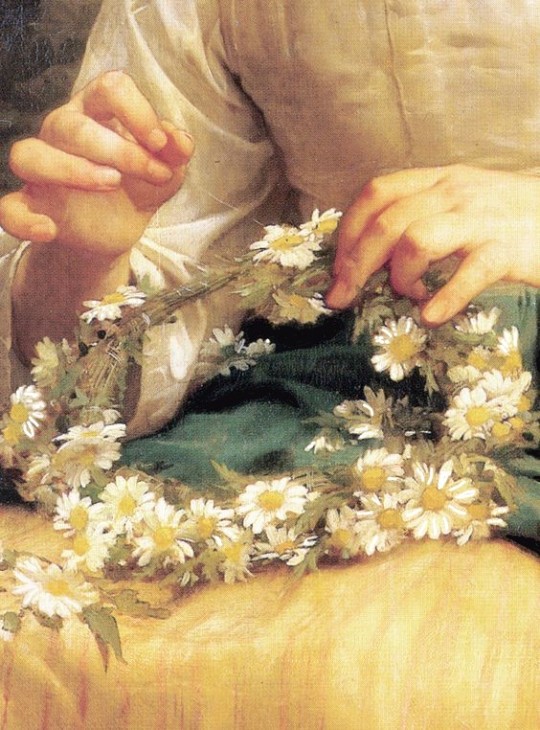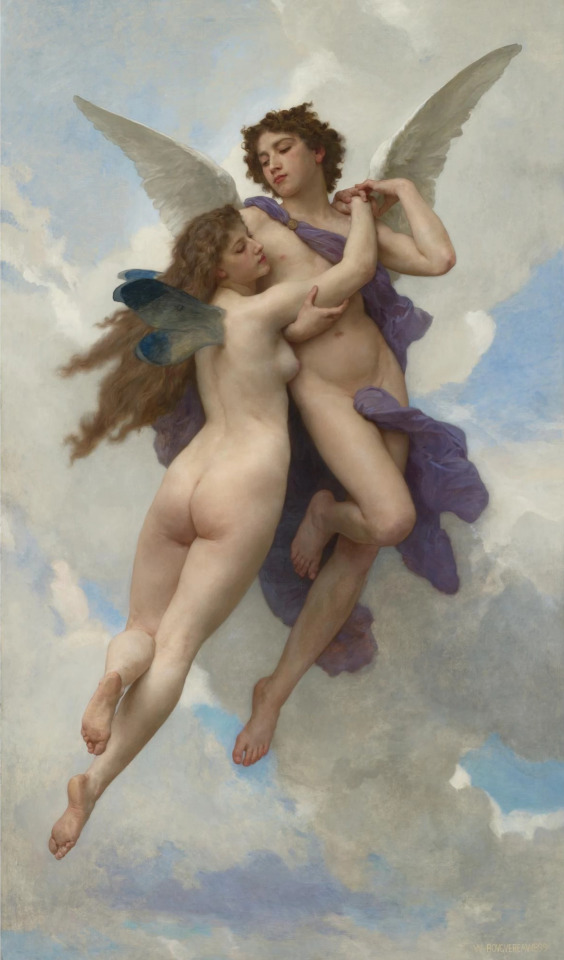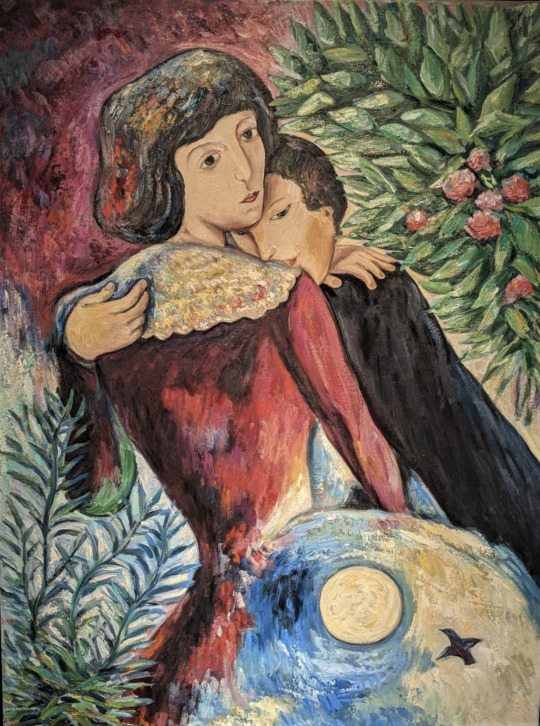#french painter
Explore tagged Tumblr posts
Text

Statue of Polyhymnia in a Landscape
Artist: Charles Meynier (French, 1768–1832)
Date: 1794-1795
Medium: Oil on canvas
Collection: Museum of the French Revolution, Vizille, France
Description
Polyhymnia ('the one of many hymns') is, in Greek mythology, the Muse of sacred poetry, sacred hymn, dance and eloquence, as well as agriculture and pantomime.
Polyhymnia name comes from the Greek words "poly", meaning "many", and "hymnos", which means "praise".
#mythological art#landscape#statue#painting#oil on canvas#trees#artwork#statue of polyhymnia#muse of sacred poetry#muse of dance and eloquence#goddess of hymns#foliage#wildflowers#fine art#oil painting#french culture#french art#charles meynier#french painter#european art#18th century painting#museum of the french revolution
24 notes
·
View notes
Text

Portrait of Empress Elisabeth Alexeievna of Russia
Artist: Élisabeth Louise Vigée Le Brun (French, 1755–1842)
Date: 1795
Medium: Oil on canvas
Location: Castle of Wolfsgarten, Hessen, Germany
Elizabeth Alexeievna (Louise of Baden)
Elizabeth Alexeievna (24 January 1779 – 16 May 1826), born Princess Louise of Baden (German: Luise Marie Auguste von Baden), was Empress of Russia during her marriage to Emperor Alexander I.
#portrait#half length#painting#oil on canvas#empress elisabeth alexeievna#russian empress#russian empire#russian history#artwork#oil painting#fine art#louise of baden#grey-blue gown#scarf#pillow#gold necklace#french culture#french art#elisabeth louise vigee lebrun#french painter#european art#18th century painting
20 notes
·
View notes
Text

Bretons in the Forest of Huelgoat
Artist: Paul Sérusier (French, 1864–1927)
Date: 1893
Medium: Oil paint on canvas
Collection: Newfields Art Museum, Indianapolis, Indiana, United States
#painting#genre art#oil on canvas#artwork#fine art#oil painting#conversation piece#bretons#forest of huelgoat#women#children#forest#costume#french culture#french art#paul serusier#french painter#european art#19th century painting#newfields art museum
23 notes
·
View notes
Text

Eugene Seguy, Winged Patterns I
#Eugene Seguy#french artist#french painter#butterfly art#butterflies#butterfly#butterfly wings#animals in art#beautiful animals#wildlife#nature#nature art#wildlife art#modern art#art history#aesthetictumblr#tumblraesthetic#tumblrpic#tumblrpictures#tumblr art#aesthetic#beauty
2K notes
·
View notes
Text

"La mare,effet de neige" (The pond,snow effect)
1874-75, oil on canvas,60.6x81.7 cm
Claude Monet (French,1840-1926)
431 notes
·
View notes
Text

Two Young Women Kissing, ca. 1790 -1794, oil on canvas, Louis-Léopold Boilly (1761-1845)
#note: this was painted by a man and was likely not meant to represent a lesbian relationship or be any kind of pro gay piece#but interesting nonetheless and shows and that idea of two women together still existed back then#lesbian#sapphic#art#18th century#lgbtq#lgbt history#lesbian history#art history#painting#french painter#wlw#contemporary#realism#queer
263 notes
·
View notes
Text

William-Adolphe Bouguereau, Child Braiding A Crown, detail, 1874.
#William-Adolphe Bouguereau#painting#child#1874#crown#flower crown#fine art#art#french painter#french art#academic painter#Bouguereau#edits#my edits#braiding#detail#the crown
1K notes
·
View notes
Text

Modestie, 1898
By Charles-Lucien Léandre
#art#painting#fine art#classical art#french art#french painter#french artist#figurative art#female figure#figurative painting#19th century art#1800s#female nude#european art
513 notes
·
View notes
Text

~ Édouard Debat-Ponsan Portrait de mademoiselle Élisabeth de Vilmorin (1891) (detail)
via edarlein11 on pinterest
#édouard debat-ponsan#fine art#art history#art detail#painting#old paintings#painting detail#french art#french artist#french painting#french painter#portrait#portrait painting#19th century art#19th century painting#late 19th century#victorian#victoriana#victorian era#victorian art#victorian painting#1890s#1890s art#1891#floral aesthetic#spring aesthetic#springtime#e
635 notes
·
View notes
Text

William Adolphe Bouguereau (French, 1825-1905) L'Amour et Psyché, 1899
#different colour and quality#not the ai fix version#l'amour et psyche#original quality#french art#french#france#mythological art#mythology#western civilization#1800s#William Adolphe Bouguereau#William Bouguereau#French painter#europe#French painting#European painting#European painter#classical art#fine art#greek mythology#L'amour et psyche#cupid and psyche#art#painting#oil painting#oil on canvas#flying#beautiful#beautiful art
2K notes
·
View notes
Text

Penelope, Charles-François Marchal, c. 1868.
#marchal#charles françois marchal#french art#french painter#penelope#mythology#19th century#19th century art#academic art#classical art#oil painting#oil on canvas#the odyssey#odysseus#portrait#portrait painting#art history#salon#painting#fashion#period fashion
252 notes
·
View notes
Text

Bouguereau, Combat des centaures et des lapithes
#art detail#art history#traditional painting#classic art#oil painting#classical art#traditional art#art#art details#19th century art#art study#artwork#1800s art#20th century art#academic art#british art#art nouveau#contemporary art#fine art#german art#italian art#modern art#renaissance art#spanish art#victorian art#vintage art#french painter#french art#william adolphe bouguereau#art nude
161 notes
·
View notes
Text

Sappho Playing the Lyre
Artist: Léopold Burthe (French, 1823–1860)
Date: 1849
Medium: Oil on canvas
Collection: Musée des Beaux-Arts de Carcassonne, Carcassonne, France
Sappho
Called the Tenth Muse by Plato, Sappho was a prolific poet of ancient Greece. She innovated the form of poetry through her first-person narration (instead of writing from the vantage point of the gods) and by refining the lyric meter. The details of Sappho’s life have been obscured by legend and mythology, and the best source of information is the Suidas, a Greek lexicon compiled in the 10th century.
Sappho was born on Lesbos to a noble family. She lived most of her life in the city of Mytilene, with the exception of her family’s brief exile in Sicily shortly after 600 B.C.E. She married a wealthy man in Mytilene, and they had a daughter names Cleis. Sappho also headed a thiasos, or an academy of unmarried women. As was the custom at the time, wealthy families sent their daughters to live at these schools where they were taught proper social graces, composition, singing, and poetry recitation. Much of Sappho’s poetry was composed in this community, and she used many of her students as subjects.
Perhaps Sappho’s most famous work is her “Ode to Aphrodite”:
Deathless Aphrodite of the spangled mind, child of Zeus, who twists lures, I beg you do not break with hard pains, O lady, my heart
but come here if ever before you caught my voice far off and listening left your father’s golden house and came,
yoking your car. And fine birds brought you, quick sparrows over the black earth whipping their wings down the sky through midair -
they arrive. But you, O blessed one, smiled in your deathless face and asked what (now again) I have suffered and why (now again) I am calling out
and what I want to happen most of all in my crazy heart. Whom should I persuade (now again) to lead you back into her love? Who, O Sappho, is wronging you?
For if she flees, soon she will pursue. If she refuses gifts, rather will she give them. If she does not love, soon she will love even unwilling.
Come to me now: loose me from hard care and all my heart longs to accomplish, accomplish. You be my ally.
(Carson, If Not, Winter, 2–5)
#painting#sappho#ancient greece#mountaintop#lyre#music#literature#poetry#lyric poetry#female figure#leopold burthe#french painter#oil on canvas#fine art#19th century painting#french culture#oil painting#artwork
189 notes
·
View notes
Text

Marc Chagall (Russian-French 1887-1985), Les Amoureux (Lovers), 1928. Oil on canvas, 45 x 35 in.
#art#artwork#modern art#contemporary art#modern artwork#contemporary artwork#20th century art#20th century modern art#20th century contemporary art#modernist#French art#modern French art#contemporary French art#French artist#French painter#Marc Chagall#Les Amoureux#lovers#romantic#romance#relationship#intimacy#female figure
421 notes
·
View notes
Text

Leilah
Artist : Gaston Bussière (1862-1929)
324 notes
·
View notes
Text

The Youth of Bacchus by William-Adolphe Bouguereau (1884)
#art#art history#art painting#painting#oil on canvas#old art#vintage art#19th century#19th century art#1880s#1880s art#William-Adolphe Bouguereau#french art#french artist#french painting#french painter#bacchus
628 notes
·
View notes